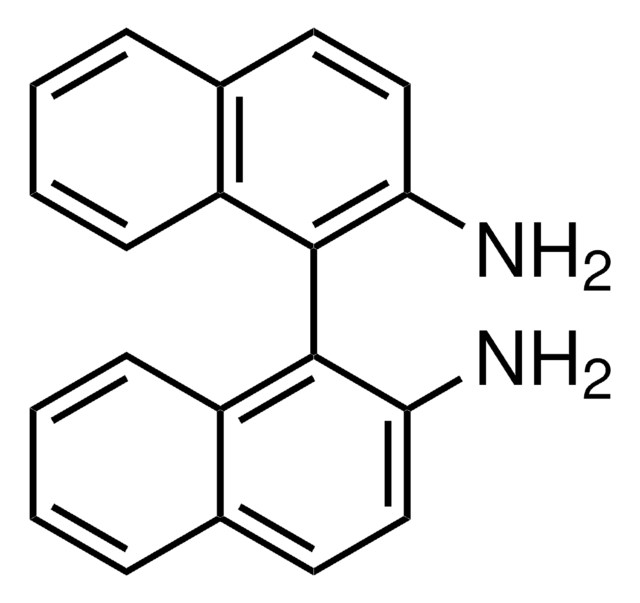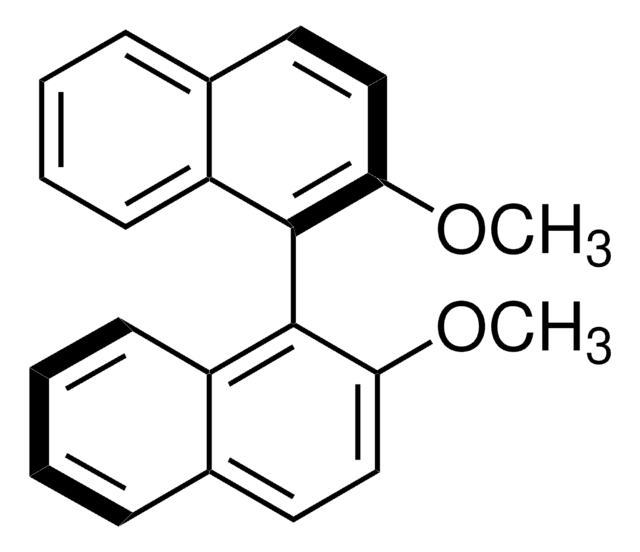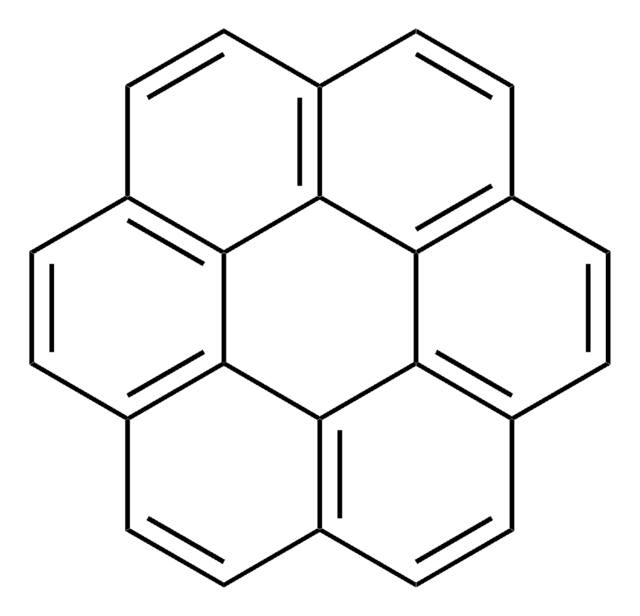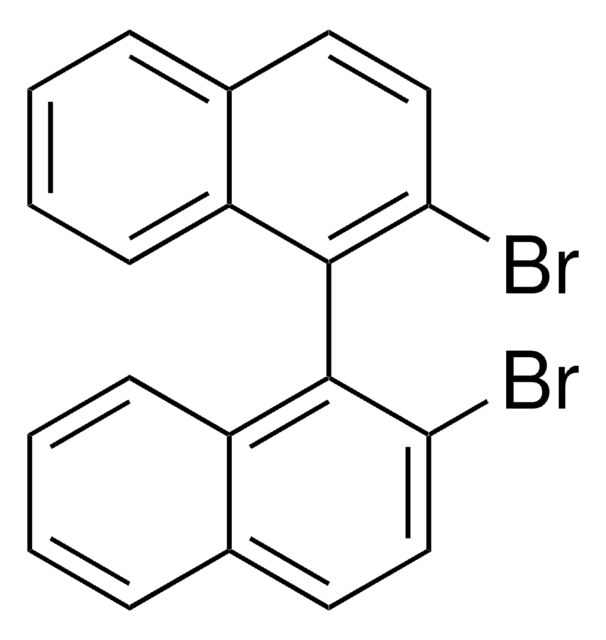104655
1,1′-Bi-2-naphthol
99%
Synonym(s):
(±)-1,1′-Binaphthalene-2,2′-diol, (±)-2,2′-Dihydroxy-1,1′-dinaphthyl, 2,2′-Dihydroxybinaphthalene, 2,2′-Dihydroxydinaphthyl, 2,2′-Dinaphthol, BINOL
About This Item
Recommended Products
Assay
99%
reaction suitability
reagent type: ligand
mp
214-217 °C (lit.)
SMILES string
Oc1ccc2ccccc2c1-c3c(O)ccc4ccccc34
InChI
1S/C20H14O2/c21-17-11-9-13-5-1-3-7-15(13)19(17)20-16-8-4-2-6-14(16)10-12-18(20)22/h1-12,21-22H
InChI key
PPTXVXKCQZKFBN-UHFFFAOYSA-N
Application
Signal Word
Danger
Hazard Statements
Precautionary Statements
Hazard Classifications
Acute Tox. 3 Oral - Eye Irrit. 2 - Skin Irrit. 2
Storage Class Code
6.1C - Combustible acute toxic Cat.3 / toxic compounds or compounds which causing chronic effects
WGK
WGK 3
Personal Protective Equipment
Certificates of Analysis (COA)
Search for Certificates of Analysis (COA) by entering the products Lot/Batch Number. Lot and Batch Numbers can be found on a product’s label following the words ‘Lot’ or ‘Batch’.
Already Own This Product?
Find documentation for the products that you have recently purchased in the Document Library.
Customers Also Viewed
Our team of scientists has experience in all areas of research including Life Science, Material Science, Chemical Synthesis, Chromatography, Analytical and many others.
Contact Technical Service










